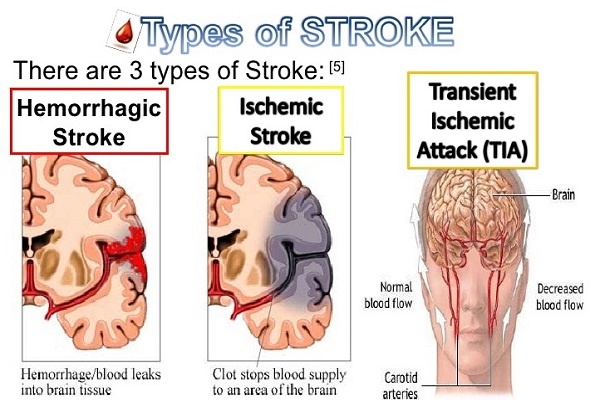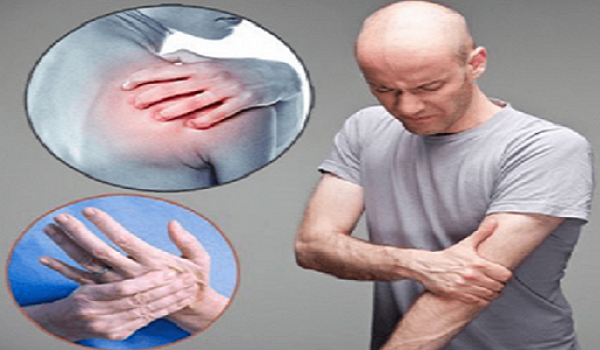Warning signs of a stroke may start up to a week before the actual attack, a new study suggests.
Eighty percent of strokes are ischemic, caused by the narrowing of the large or small arteries of the brain, or by clots that block blood flow to the brain. They are often preceded by a transient ischemic attack (TIA), a “warning stroke” or “mini-stroke” that shows symptoms similar to a stroke, typically lasts less than five minutes, and does not injure the brain.
How Do Strokes Happen?
- Strokes happen when a blood vessel that brings oxygen to the brain is either blocked (ischemic attack) or bursts open (hemorrhagic stroke). Lack of oxygen kills the brain cells that this particular blood vessel serves, and the part of the body that these brain cells control stops working.
- When the blood vessel is only blocked for a short time, it’s called a transient ischemic attack (or TIA). They are like mini-strokes or "warning strokes", and they tend to happen before a major stroke.
What Is a Transient Ischemic Attack (TIA)?
TIAs occur when the blood supply to your brain is briefly blocked by a clot or narrowed artery. Narrowed arteries are usually caused by plaque — a buildup of fat, cholesterol, calcium, and other substances. The symptoms of a TIA are the same as in a stroke, the difference is that in a TIA, the blockage is temporary and blood flow returns on its own. Since blood flow is interrupted only for a short time, symptoms of a TIA usually go away within an hour. Because the symptoms go away, many people ignore them – which is a big mistake because they may be a red flag warning you that a major stroke could happen, and often within the next 48 hours.
What Are the Signs of a TIA?
Even though TIA symptoms go away, you should never ignore a TIA; it is often a warning sign that a major stroke may happen soon. A person experiencing signs of a TIA should call 9-1-1 and get to an emergency department at once. This preventive measure could help prevent a fatal or disabling stroke.
-
Trouble seeing in one or both eyes.
A stroke can affect the area of the brain that manages vision. A sudden loss of vision is another sign of stroke.

-
Numbness or weakness in the face, arm, or leg, located on one side of the body.
Because our brains control each side of the body from a different hemisphere, a stroke usually affects one half of the body.

-
Sudden dizziness, trouble walking, loss of balance or coordination.
The keyword here is sudden: one moment you’re fine, the next you feel dizzy or have trouble keeping your balance. This is another sign that your brain is being affected by something.
-
Confusion or trouble understanding.
If you suddenly feel confused and have trouble understanding things you usually have no problems managing, it could be a sign of stroke.

-
Sudden dizziness, trouble walking, loss of balance or coordination
- The keyword here is sudden: one moment you’re fine, the next you feel dizzy or have trouble keeping your balance. This is another sign that your brain is being affected by something.
-
- Sudden and severe headache with no obvious cause. A stroke can cause a sudden, very bad headache that doesn’t seem related to your usual headache triggers.
- Sudden numbness or weakness of the face, arm or leg, especially on one side of the body
- Sudden confusion or problems understanding
- Sudden difficulty speaking
- Sudden vision difficulty in one or both eyes
- Sudden dizziness, loss of balance or coordination, or difficulty walking
- Sudden, severe headache with no apparent cause
If you notice any of the symptoms above, call for emergency help immediately. The faster you get medical help, the better your chances are of avoiding major disability or even death.
What Are Ways to Prevent a TIA?
Nearly 90 percent of strokes and TIAs are caused by plaque-filled blood vessels that block the blood supply to the brain or by a blood clot that travels from other parts of your body — like the heart — to the brain. Plaque buildup can be caused by:
- Smoking
- Buildup of high amounts of certain fats and cholesterol in the blood
- High blood pressure
- High blood sugar levels
You can reduce your risk of having both a stroke and TIA by maintaining a healthy lifestyle:
- Find out if you have high blood pressure, and if you do, get treatment
- Avoid or quit smoking
- Eat a healthy diet that is low in saturated fat
- Exercise regularly
- Maintain a healthy weight
- Drink alcohol in moderation — or not at all
- Address other related health issues, such as high cholesterol
- Maintain a healthy blood sugar level
Your physician may also recommend you take a low dose of aspirin or other blood thinner as part of your stroke prevention routine.
The decisions you make today, such as eating healthy and exercising, may prevent your chances of a stroke tomorrow. If you think you might be experiencing a TIA, take the warning signs seriously, and don’t delay getting help.
To learn more about how mini strokes and how to prevent future strokes, contact 'SIS-CIH' Comprehensive Stroke Center at 028-6280-3333, ext. 8535 or request an appointment online today.

Check out our different Screening Packages for different needs
- Address: No. 3, Street 17A, Binh Tri Dong B Ward, Binh Tan Dist., HCMC
- Phone: (848) 6280 3333 - Fax: (848) 6290 8800
- Website: This email address is being protected from spambots. You need JavaScript enabled to view it. Email for appointment: This email address is being protected from spambots. You need JavaScript enabled to view it.










